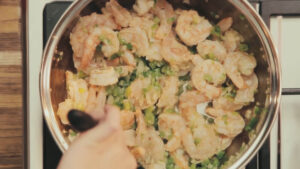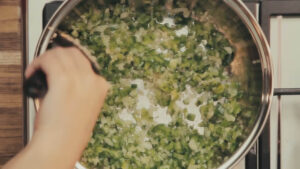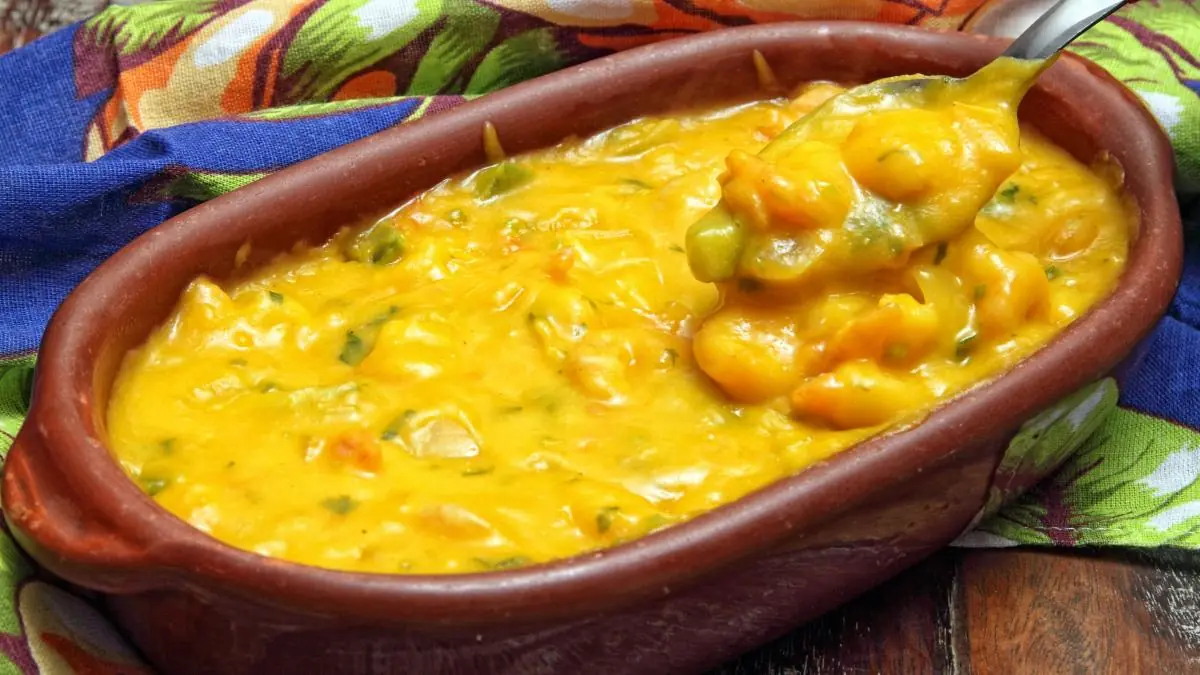
I have been exploring Brazilian cuisine for quite some time, and let me tell you, the journey has been absolutely delicious.
Among all the meat and sweets delights, another one that stood out is the Bobo de Camarao, a very exciting dish. Let’s see how it’s made.
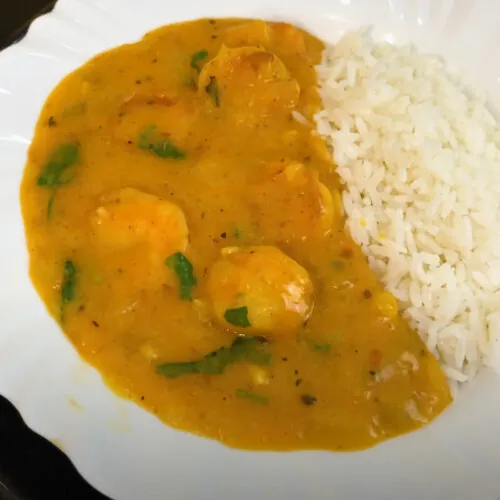
Bobó de Camarão - Brazilian Shrimp and Cassava Stew
Equipment
- 1 Large pot or Dutch oven
- 1 Medium saucepan
- 1 Blender or Food Processor
- 1 Wooden spoon
- 1 Knife and cutting board
- 1 Citrus press for the lime Optional
Ingredients
- 1½ lbs Fresh shrimp Peeled and deveined
- 2 lbs Cassava (yuca) Peeled and cut into chunks
- 1 Whole Large onion Chopped
- 1 Whole Red bell pepper Chopped
- 3 Cloves Garlic Minced
- 2 Whole Medium tomatoes Chopped
- 1 Can Coconut milk
- 2 Tbsp Dendê oil or olive oil for a milder flavor
- Juice of 1 lime
- 2 Tbsp Fresh cilantro Chopped
- Salt and black pepper To taste
- Hot sauce or chopped chili peppers Optional for a kick
Instructions
- Cook the Cassava:Place the cassava chunks in a large pot with enough water to cover them. Bring to a boil and cook until cassava is soft, about 20-25 minutes. Drain and let cool slightly. Remove the tough inner fibers from the cassava, then transfer to a blender or food processor. Add the coconut milk and blend until smooth. Set aside.
- Prepare the Shrimp:In a bowl, marinate the shrimp with lime juice, salt, and pepper. Set aside while preparing the stew base.
- Cook the Vegetables:Heat dendê oil in a large pot or Dutch oven over medium heat. Add the chopped onion and red bell pepper, sautéing for about 5 minutes until softened. Add the garlic and tomatoes, and continue to cook until the tomatoes break down, about 5 more minutes.
- Combine and Simmer:Stir the cassava and coconut milk mixture into the pot with the vegetables. Mix well, and let the stew simmer for 10-15 minutes, stirring occasionally, until it thickens slightly and the flavors meld together.
- Add the Shrimp:Add the marinated shrimp to the pot and cook for 5-7 minutes, or until the shrimp turn pink and are fully cooked. Avoid overcooking to keep the shrimp tender.
- Finish and Serve:Stir in the chopped cilantro and adjust seasoning with additional salt and pepper as needed. Serve hot over rice, garnished with fresh cilantro. Add hot sauce for extra heat if desired.
Video
Notes
- Dendê Oil Substitute: If dendê oil is unavailable, olive oil works as a substitute, but the flavor won’t be as authentic. Mixing a touch of annatto oil with olive oil can help achieve a closer color and taste.
- Adjusting the Texture: For a thicker stew, let it simmer a bit longer; if it’s too thick, add extra coconut milk or water.
- Add Some Heat: For a spicy version, include chopped chili peppers or a splash of hot sauce to the vegetable mix.
Serving Suggestions and Pairings
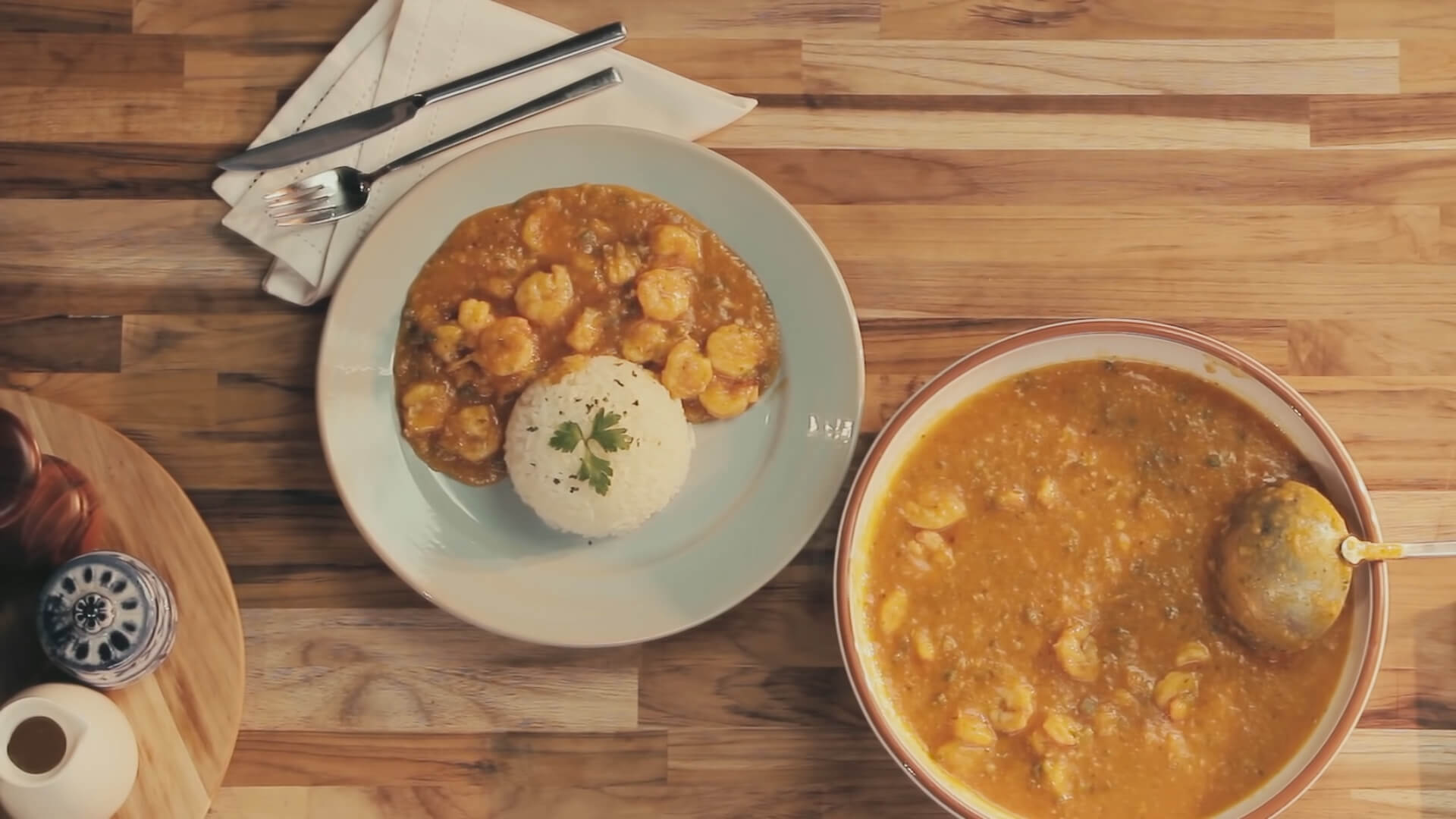
Enhance your Bobó de Camarão with traditional sides and drinks to create a complete and memorable Brazilian meal.
Here are some classic and creative ways to serve this flavorful stew:
- Fluffy White Rice: The creamy, rich sauce of Bobó de Camarão is perfectly soaked up by simple white rice. For a healthier twist, you can serve it with brown rice or even quinoa.
- Farofa (Toasted Cassava Flour Mixture): This crunchy, savory side dish adds a wonderful texture contrast to the creamy stew. You can make farofa with sautéed onions, garlic, and chopped bacon for added flavor.
- Fried Plantains: Sweet, caramelized plantains balance the savory elements of the stew and add a touch of sweetness to the meal. Try slicing them into rounds or long strips and frying them until golden.
- Brazilian Vinaigrette Salad: This fresh and zesty salad, made with chopped tomatoes, onions, bell peppers, and a drizzle of vinegar and olive oil, adds a refreshing, tangy note that cuts through the richness of the dish.
- Steamed Vegetables: Lightly steamed vegetables like broccoli, green beans, or asparagus make for a simple yet nutritious addition to your meal.
- Pão de Queijo (Brazilian Cheese Bread): Serve these chewy, cheese-filled rolls as an appetizer or alongside the stew for a savory, gluten-free bread option.
- Tropical Fruit Desserts: End your meal on a sweet note with desserts like passion fruit mousse or coconut flan. Both are light, creamy, and refreshing, providing a nice balance to the richness of the stew.
- Chilled Caipirinha Cocktail: For an authentic Brazilian experience, serve a classic caipirinha, made with cachaça, fresh lime, sugar, and ice. This cocktail is citrusy, refreshing, and a perfect complement to the savory, tropical flavors of Bobó de Camarão.
- Non-Alcoholic Option: For a family-friendly beverage, offer guaraná soda, a popular Brazilian soft drink, or a fresh tropical fruit juice like mango, pineapple, or acerola.
Variations on Bobó de Camarão
Whether you’re catering to dietary restrictions or simply looking to put your own spin on the dish, there are many ways to customize Bobó de Camarão. Here are some ideas to make this recipe uniquely yours:
Seafood Alternatives
- Fish Fillets: Use firm white fish such as cod, halibut, or sea bass as a delicious alternative to shrimp.
- Lobster or Crab: Elevate the dish by adding lobster or crab meat for a more decadent and luxurious meal.
- Mixed Seafood Stew: Combine shrimp with scallops, mussels, or squid to create a rich and flavorful seafood medley.
Vegetarian and Vegan Options
- Hearts of Palm: These tender, vegetable-like stalks work well as a seafood substitute, absorbing the flavors of the stew.
- Mushrooms: Use a mix of cremini, shiitake, or oyster mushrooms to add a meaty texture and rich umami flavor.
- Jackfruit: Young, green jackfruit is an excellent vegan substitute that mimics the texture of shredded meat.
Adjusting the Spice Level
- For a Mild Version: Keep the dish kid-friendly by skipping any chili peppers and focusing on fragrant herbs.
- For a Spicy Kick: Add chopped chili peppers, cayenne, or a drizzle of hot sauce to bring the heat. Try malagueta peppers for an authentic Brazilian touch.
Herb Variations
- Fresh Basil: Swap out cilantro for basil if you prefer a sweeter, slightly anise-like flavor.
- Parsley or Green Onions: These can be used as milder herb options to garnish and add freshness.
Texture Adjustments
- Chunky or Smooth: Blend the cassava and coconut milk mixture until completely smooth for a creamy consistency, or leave some chunks for more texture.
- Richer Flavor: Add a splash of fish stock or seafood bouillon to deepen the umami flavors of the stew.
Last Words
I hope you’re inspired to try making Bobó de Camarão at home and discover just how comforting and delicious it can be.
Don’t forget to serve it with your favorite Brazilian sides and maybe even a refreshing caipirinha to complete the experience.
If you give this recipe a try, I’d love to hear your thoughts and any creative changes you made. Happy cooking, and enjoy every spoonful!


